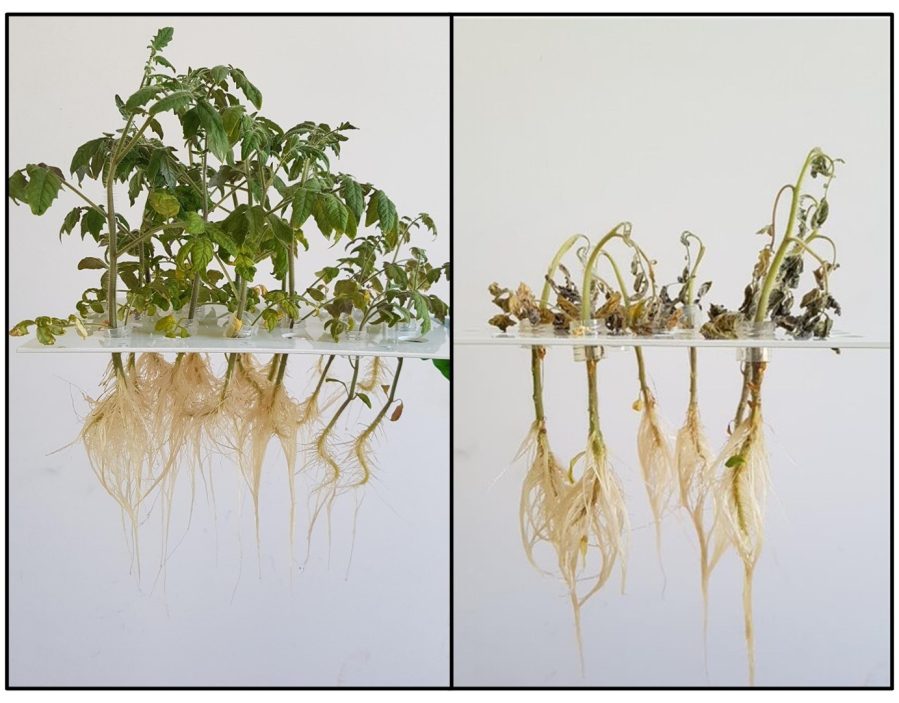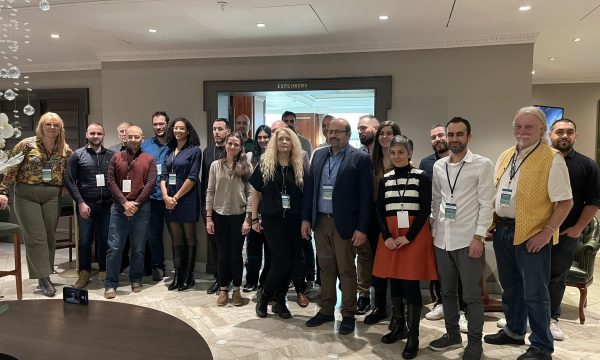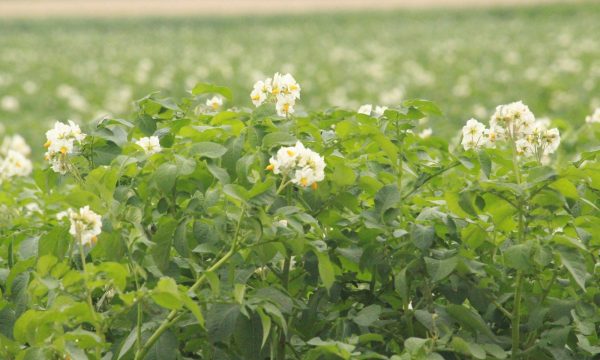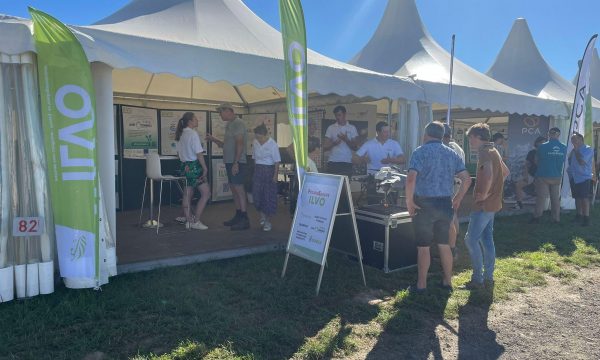Press release Research on bacteria causing brown rot on potato and tomato gets boost from recent breakthrough and new DNA techniques

One of the world's most harmful plant bacteria reveals some of its secrets in new doctoral work by ILVO, VIB and UGent. This is the Ralstonia solanacearum species complex, which can affect more than 200 plant species, including some very important crops such as potato and tomato. Joren De Ryck discovered where in the plant roots proteins are active that are injected by the bacteria and then make the plant sick. The method he used to do this is groundbreaking. This fall, new research will also start on the exact infection source(s) of recorded brown rot infections since the first observations in the 1990s, led by ILVO expert Johan Van Vaerenbergh. To this end, the latest DNA techniques are being deployed on carefully preserved samples of Ralstonia solanacearum from the bacterial culture collection of the Diagnostic Center for Plants (Merelbeke). Any new discovery about Ralstonia is important for the development of effective control strategies. Because despite the measures in place in Belgium and Europe, a flare-up of the bacterium remains unpredictable.
Ralstonia solanacearum is a quarantine organism in the EU that experienced large-scale outbreaks in the 1990s in Belgium, the Netherlands, France and the United Kingdom, among others. The first official detection within the EU was in Belgium in October 1989, in three potato fields in the Mol-Lommel region. Meanwhile, brown rot was officially detected on 30 potato plots in our country.
PhD sheds light on infection strategy of bacteria
The bacteria settle in the water-carrying channels within the plant roots, blocking the upward flow of sap and eventually causing the plants to wilt. But exactly how the bacteria can trick the plants' immune system into infecting the plant has not been fully elucidated even after three decades of research.
Joren De Ryck (ILVO, VIB and UGent) did take an important step forward with his doctoral research. He gained more insight into the functioning of pathogenic proteins that are injected into the plant by the bacteria. Specifically, he mapped where in the plant those proteins are active and was able to predict how they are built up. To do so, he used a pioneering approach, namely the BioID method in which plant proteins that are in close proximity to the bacterial protein can be tagged and then identified. He also established an analytical technique that can be used in follow-up research to further unravel the molecular basis of the interaction between the tomato plant and the bacteria.
This information is desperately needed to understand the pathogen's infection strategy and to develop broad and sustainable resistance strategies over time.
Spread through imported (seed) potatoes, contaminated water and the 'bittersweet' vine
The Diagnostic Center for Plants at ILVO mapped the epidemiology of the brown rot bacterium in the 1990s under the direction of bacteriologist Johan Van Vaerenbergh, in collaboration with researchers from other European countries. Pretty soon it became clear that the bacterium had entered the EU by the import of infected Egyptian early potatoes. The bacteria accidentally ended up in waterways in which "bittersweet" (Solanum dulcamara) was the ideal host plant for propagation and survival of the bacteria. Brown rot infections subsequently arose from irrigation of potato fields from these contaminated waterways.
Today, 45 Flemish municipalities therefore have a protection zone in which no surface water may be used for the cultivation of potatoes, tomatoes and eggplant. In addition, imported potatoes and seed potatoes are systematically checked by the Diagnostic Center for Plants on behalf of the Federal Food Agency FASFC. This is done in a specially equipped quarantine building. Thanks to this measure, another contaminated batch of potatoes from Egypt destined for processing was intercepted and destroyed in July 2023.
New research into exact source of infection using DNA techniques
At ILVO, a new project is starting this year to identify the exact infection source(s) of recorded brown rot infections. The Plant Diagnostic Center has a collection of 135 well-preserved Ralstonia solanacearum cultures, as samples were taken annually in watercourses and from bittersweet plants in the period 1996-2012. The project will use DNA sequencing techniques from forensic research to analyze the genetic material of all these bacterial strains and seek links between brown rot infections among themselves and between brown rot infections and infections in watercourses.
This should give us more information about how the brown rot bacterium was introduced and spread. The ultimate goal is to find a way to more quickly identify the origin of infections in the future.
Meer info
Joren De Ryck gives additional explanation in his podcast Jorens PhD special, part of the podcast De Microcast. He defended his doctoral research in July this year. Supervisors were Prof. Sofie Goormachtig (VIB), Prof. Petra Van Damme (UGent) and Dr. Jane Debode (ILVO).


